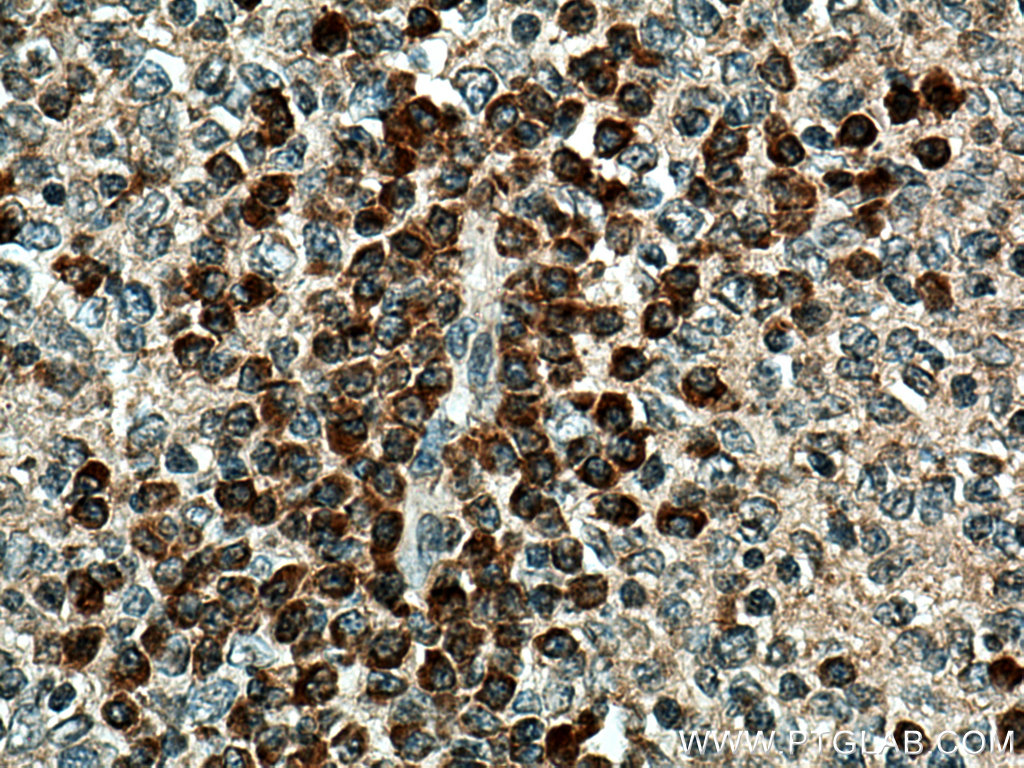验证数据展示
经过测试的应用
| Positive IHC detected in | human tonsillitis tissue Note: suggested antigen retrieval with TE buffer pH 9.0; (*) Alternatively, antigen retrieval may be performed with citrate buffer pH 6.0 |
推荐稀释比
| 应用 | 推荐稀释比 |
|---|---|
| Immunohistochemistry (IHC) | IHC : 1:50-1:500 |
| It is recommended that this reagent should be titrated in each testing system to obtain optimal results. | |
| Sample-dependent, Check data in validation data gallery. | |
产品信息
28838-1-AP targets CD1c in IHC, ELISA applications and shows reactivity with human samples.
| 经测试应用 | IHC, ELISA Application Description |
| 经测试反应性 | human |
| 免疫原 | CD1c fusion protein Ag29830 种属同源性预测 |
| 宿主/亚型 | Rabbit / IgG |
| 抗体类别 | Polyclonal |
| 产品类型 | Antibody |
| 全称 | CD1c molecule |
| 别名 | T-cell surface glycoprotein CD1c, R7, CD1c molecule, CD1, BDCA1 |
| 计算分子量 | 333 aa, 38 kDa |
| GenBank蛋白编号 | BC126467 |
| 基因名称 | CD1C |
| Gene ID (NCBI) | 911 |
| RRID | AB_3086090 |
| 偶联类型 | Unconjugated |
| 形式 | Liquid |
| 纯化方式 | Antigen affinity purification |
| UNIPROT ID | P29017 |
| 储存缓冲液 | PBS with 0.02% sodium azide and 50% glycerol , pH 7.3 |
| 储存条件 | Store at -20°C. Stable for one year after shipment. Aliquoting is unnecessary for -20oC storage. |
背景介绍
CD1c molecule (CD1c, also known as R7, CD1, CD1A, and BDCA1) is a member of the CD1 family of transmembrane glycoproteins, which synthesizes in the endoplasmic reticulum and expresses on the monocytes, marginal zone B cells in lymph nodes as well as peripheral blood (PMID: 23468110). The CD1 proteins belong to the family of major histocompatibility complex (MHC) class I-like proteins that present lipid-based antigens to T cells (PMID: 15032598; 23127489). CD1c shows interaction with both αβ or γδ T cells and mediates T cell responses against mycobacterium tuberculosis (PMID: 10727456; 10786796).
实验方案
| Product Specific Protocols | |
|---|---|
| IHC protocol for CD1c antibody 28838-1-AP | Download protocol |
| Standard Protocols | |
|---|---|
| Click here to view our Standard Protocols |

